Kagoshima is a beautiful prefecture located in the south of Japan, known for its stunning natural landscapes and its diverse wildlife. Among the many creatures that inhabit the region, birds are one of the most popular and beloved.
With numerous species of migratory and non-migratory birds living in Kagoshima, it’s no wonder that bird watching has become a popular activity for locals and tourists alike. Whether you’re an experienced birder or a beginner, Kagoshima has something to offer.
From majestic raptors to colorful songbirds, the prefecture has an abundance of avian species that will delight any bird enthusiast!
1. Hooded Crane
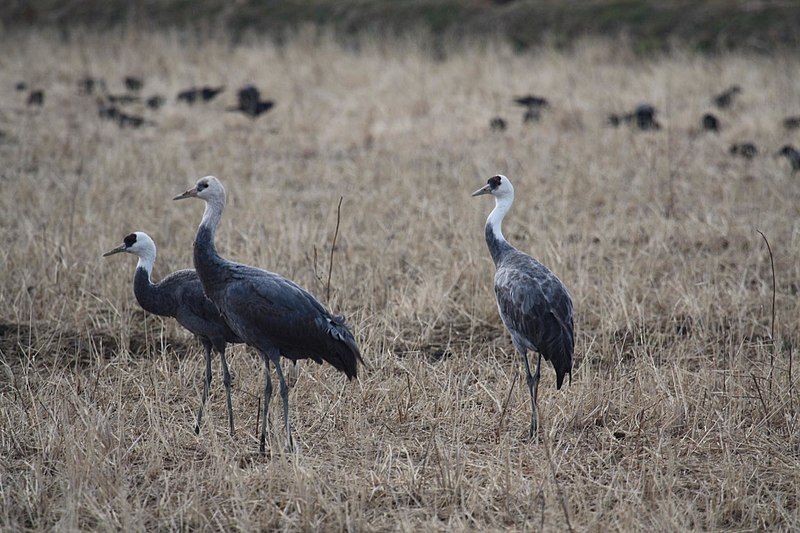
The hooded crane is a species of crane that can be found in East Asia. It is typically a migratory bird that is seen in Japan, as well as in places like China, Mongolia, and Korea.
The hooded crane is a very unique species with its distinctive brown body and white hood-like feathers. It is a large bird, with a wingspan of up to two meters and a length of up to 1.2 meters. The hooded crane is an important member of the crane family.
It is a symbol of longevity and fidelity in many cultures, and its presence is often seen as a sign of good luck. These birds feed on a variety of items, including water plants, insects, berries, and small fish, and they are also known to eat grain, potatoes, and other crops.
The hooded crane is an important species for conservation. As an important part of wetland ecosystems, it plays a vital role in the balance of nature and helps to regulate water levels and maintain biodiversity.
It is also an important species for people, as its presence can attract tourists to wetlands and increase the economic benefits of wetlands. In Japan, the hooded crane is a beloved species, and it is even featured in many Japanese films and literature.
The decline of the hooded crane is a concern in Japan, and measures have been taken to protect the species. In recent years, there have been campaigns to raise awareness about the importance of these birds and to encourage people to take part in conservation efforts.
The hooded crane is an important species, and its presence is a reminder of the beauty and importance of nature. It is a symbol of resilience, longevity, and good luck, and it is an important part of the wetland ecosystems of East Asia.
| Kingdom | Animalia |
| Phylum | Chordata |
| Class | Aves |
| Order | Gruiformes |
| Family | Gruidae |
| Genus | Grus |
| Species | G. monacha |
2. Mandarin Duck
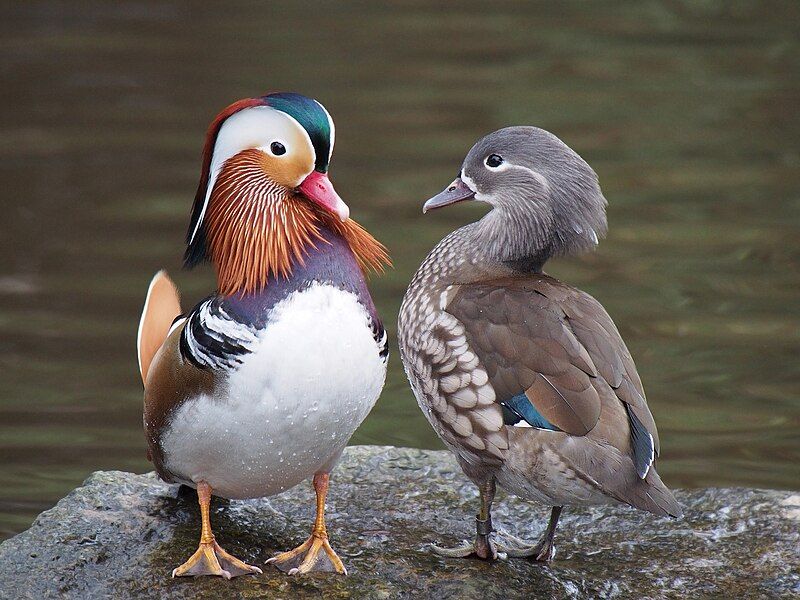
The mandarin duck is a species of perching duck that is native to the East Palearctic region. It is considered to be sexually dimorphic, meaning the males and females of the species show a distinct difference in their physical appearance.
The mandarin duck is a medium-sized duck, measuring between 41 and 49 cm in length, and has a wingspan of between 65 and 75 cm. It is closely related to the North American wood duck, and is the only other member of the genus Aix.
The male mandarin duck is renowned for its colorful plumage. Its head and neck are a bright chestnut color, with a white patch around the eye. Its back and wings are iridescent dark green with a purple sheen, while its breast and neck feathers are a very vibrant shade of orange.
The female, on the other hand, is much more subdued in color. Its head and neck are a grayish-brown color, with a white patch around the eye. Its back and wings are a brownish-gray color, while its breast and neck feathers are a lighter shade of gray.
The mandarin duck is a very popular species of duck and is often kept as a pet or as an ornamental bird in aviaries. They are very social creatures that will form large flocks when given the chance. They have a variety of calls, including a loud, resonating whistle.
They are also very active and often seen swimming or flying in search of food. Mandarin ducks are omnivorous and feed on aquatic plants, insects, and mollusks. In addition to being kept as pets, mandarin ducks are also popular amongst bird watchers and photographers.
With its striking coloration and active behavior, they are a favorite amongst wildlife enthusiasts.
| Kingdom | Animalia |
| Phylum | Chordata |
| Class | Aves |
| Order | Anseriformes |
| Family | Anatidae |
| Genus | Aix |
| Species | A. galericulata |
3. Green Pheasant
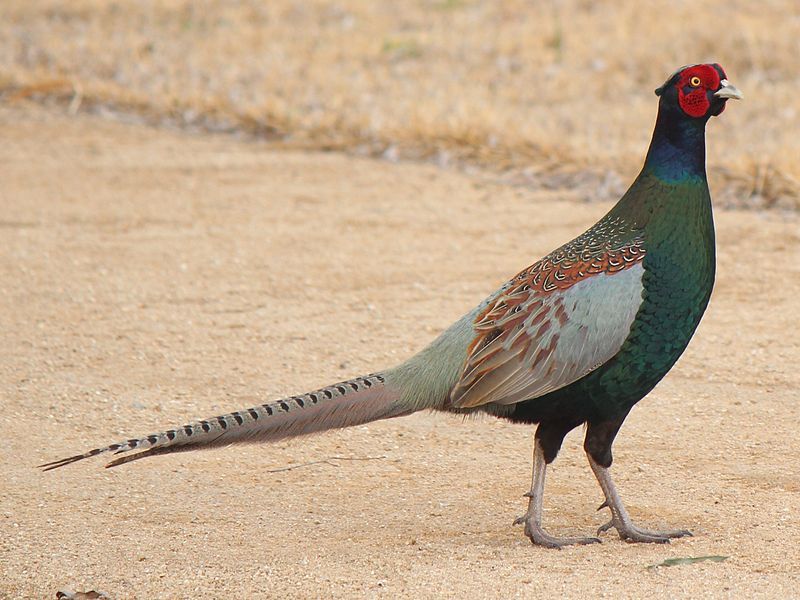
The green pheasant is a species of pheasant native to the Japanese archipelago and is endemic to this region. It is omnivorous, meaning it feeds on both plants and animals and is the national bird of Japan.
Some taxonomists classify it as a subspecies of the common pheasant, Phasianus colchicus, while others classify it as a distinct species. Its scientific name is Phasianus versicolor.
It is also known as the Japanese green pheasant, due to its native habitat. The green pheasant is a medium-sized bird, measuring around 80 cm in length. Its feathers are typically a bright green color, with a purplish sheen on its tail and wings.
It has a short, fan-shaped tail, and its beak is yellow in color. Its legs are short and thin, and they are usually brown in color. The green pheasant is a solitary animal, and can often be seen foraging in thick undergrowth for food.
Its diet consists mainly of seeds, berries, insects, and small animals. It also eats a variety of plants, including grasses, herbs, and bamboo shoots. The green pheasant is not an endangered species, but its population is decreasing due to habitat destruction and hunting.
It is also vulnerable to predators such as foxes, feral cats, and raccoons. The Japanese government has taken steps to protect the bird by introducing protective laws and creating protected areas.
Overall, the green pheasant is an important part of the Japanese culture and environment. It is a beautiful bird and should be protected to ensure its survival in the future.
| Kingdom | Animalia |
| Phylum | Chordata |
| Class | Aves |
| Order | Galliformes |
| Family | Phasianidae |
| Genus | Phasianus |
| Species | P. versicolor |
4. White-Naped Crane
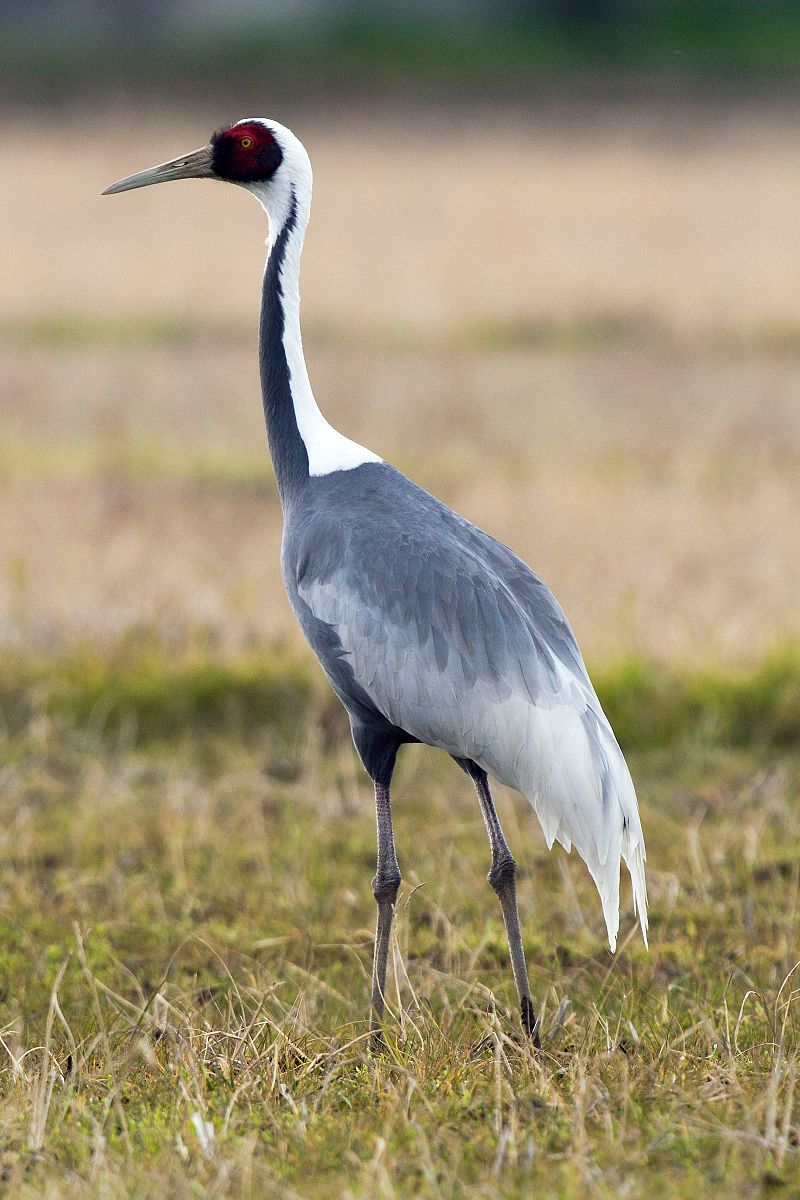
The white-naped crane is a majestic bird of the crane family. It is a large bird, measuring about 112–125 cm long and 130 cm tall, and weighing about 5.6 kg. It has long, pinkish legs, a grey-and-white-striped neck, and a striking red face patch.
The white-naped crane is a stunningly beautiful bird, with its long neck and bright red patch contrasting against its light grey and white feathers. It is an impressive sight in its natural habitat and can be seen in wetlands, grasslands, and some agricultural areas.
The white-naped crane is an endangered species, with its population declining due to habitat loss and degradation, as well as hunting and egg collection.
Conservation efforts are underway, as the species is considered to be an important indicator of the overall health of the wetlands and grasslands it inhabits. The white-naped crane is a fascinating bird and a symbol of the beauty of nature.
It is an important species to protect and conserve, and its presence in wetland and grassland areas is a reminder of the importance of preserving these environments.
| Kingdom | Animalia |
| Phylum | Chordata |
| Class | Aves |
| Order | Gruiformes |
| Family | Gruidae |
| Genus | Antigone |
| Species | A. vipio |
5. Common Pochard
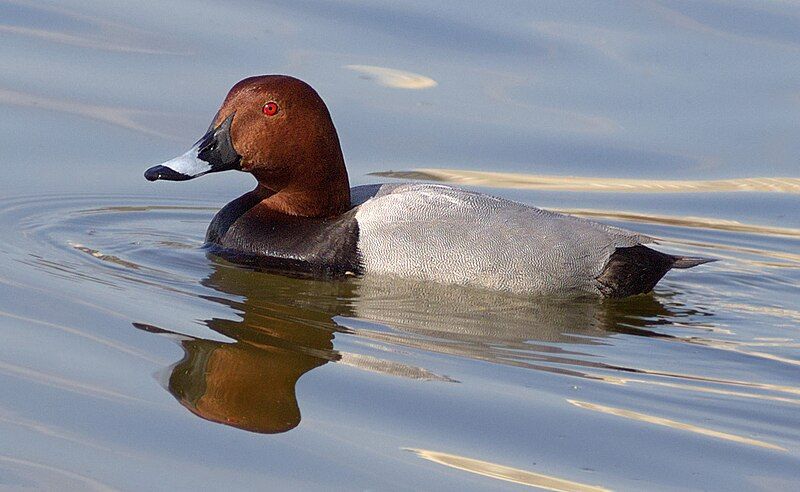
The Common Pochard is a medium-sized species of diving duck. Its scientific name, Aythya ferina, is derived from two sources.
The first part, Aythya, is derived from the Greek word aithuia, which was used by classical authors like Hesychius and Aristotle to denote an unidentified seabird.
The second part, ferina, is derived from Latin and is made up of two words – ferus, meaning “wild”, and -ina, which is a noun suffix used to denote “game”. This suggests that the Common Pochard, and indeed Aythya ferina, is a wild species of game bird.
| Kingdom | Animalia |
| Phylum | Chordata |
| Class | Aves |
| Order | Anseriformes |
| Family | Anatidae |
| Genus | Aythya |
| Species | A. ferina |
6. White-Bellied Green Pigeon
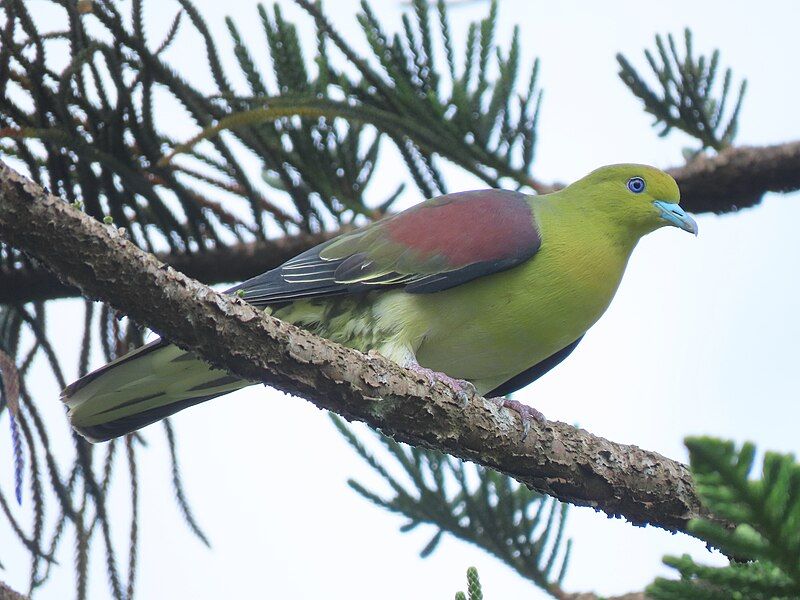
The White-bellied Green Pigeon is a type of bird found in many parts of Asia, including China, Japan, South Korea, Laos, Russia, Taiwan, Thailand, India, and Vietnam.
This species of bird is typically found in temperate forests and is especially known for its unusual behavior of drinking salt water. This behavior is quite unexpected, as many birds prefer to drink fresh water.
In addition, the White-bellied Green Pigeon’s habitat is typically found in humid forests, meaning that it must adapt to drinking salt water despite its environment. The White-bellied Green Pigeon is an intriguing bird species due to its unique behavior.
It is believed that this species has developed the ability to drink salt water due to the fact that it is found in humid forests, where fresh water may be harder to come by.
Furthermore, this bird is able to filter out the salt from the salt water and drink it without any ill effects.
This allows it to survive in its habitat, despite the lack of fresh water. The White-bellied Green Pigeon is a fascinating species, and its unusual behavior makes it stand out among other species of birds.
Its ability to survive in humid forests by drinking salt water is an example of the species’ adaptability, and it is an interesting reminder of the resilience of nature.
| Kingdom | Animalia |
| Phylum | Chordata |
| Class | Aves |
| Order | Columbiformes |
| Family | Columbidae |
| Genus | Treron |
| Species | T. sieboldii |
7. Little Grebe
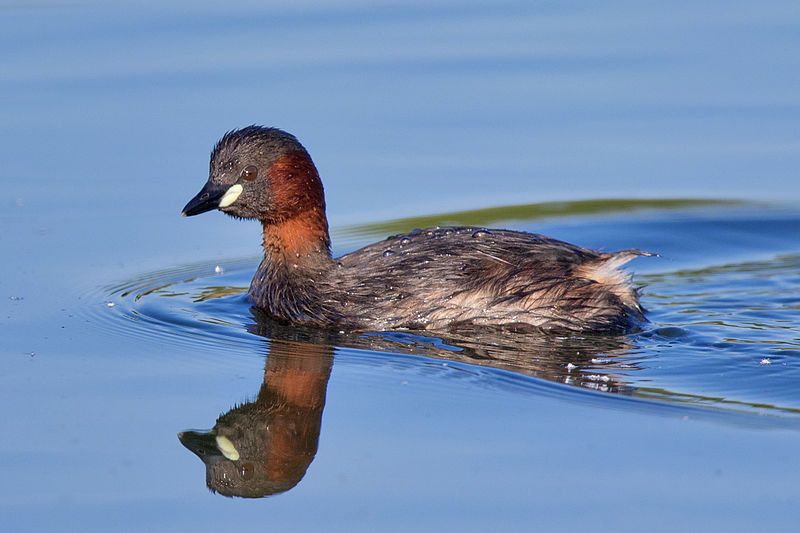
The little grebe is a member of the grebe family of water birds and is also known by the nickname dabchick. Its scientific name is derived from Ancient Greek and Latin words that describe the bird’s physical characteristics.
The genus name, takhus, comes from Ancient Greek and means “fast,” which reflects the swiftness of the bird’s movements in the water.
The species name, ruficollis, is a combination of the Latin words rufus, meaning “red,” and collum, meaning “neck,” with the suffix -collis added to indicate that the bird has a reddish neck.
This Latin phrase was then combined with the Modern Latin -collis to form the species name. Together, these scientific terms provide a detailed description of the little grebe’s physical features.
| Kingdom | Animalia |
| Phylum | Chordata |
| Class | Aves |
| Order | Podicipediformes |
| Family | Podicipedidae |
| Genus | Tachybaptus |
| Species | T. ruficollis |
8. Eurasian Wigeon
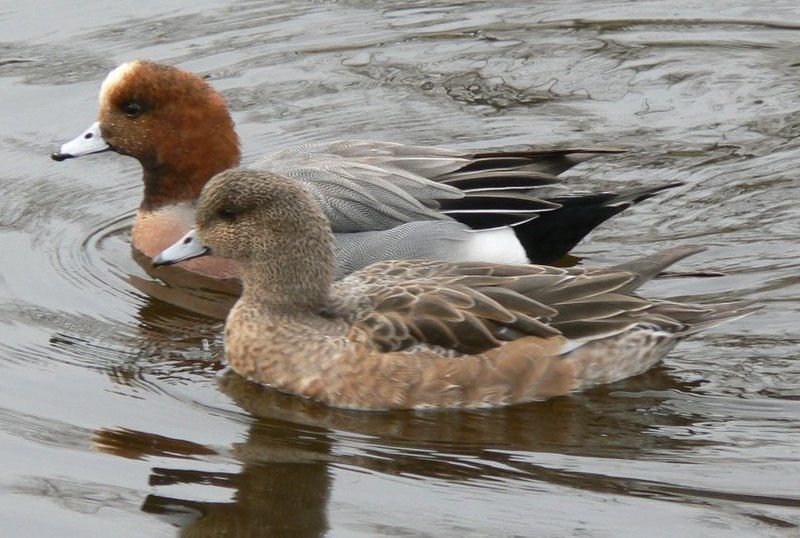
The Eurasian wigeon, also known as the European wigeon, widgeon, or simply wigeon, is a species of dabbling duck that can be found throughout the Palearctic region. It is one of three species of wigeon, and is the most commonly seen and widespread of them all.
It is generally found in wetlands, fields, and lowland areas, and can be recognized by its distinctive brown and white plumage and white crown. The Eurasian wigeon feeds on vegetation, both aquatic and terrestrial, and can be seen in large flocks during the winter months.
This species is an important part of the Palearctic ecosystem, providing food for a variety of predators such as foxes, hawks, and owls. Due to its wide range and relatively large population, the Eurasian wigeon is not considered to be at risk of extinction.
| Kingdom | Animalia |
| Phylum | Chordata |
| Class | Aves |
| Order | Anseriformes |
| Family | Anatidae |
| Genus | Mareca |
| Species | M. penelope |
9. Baikal Teal
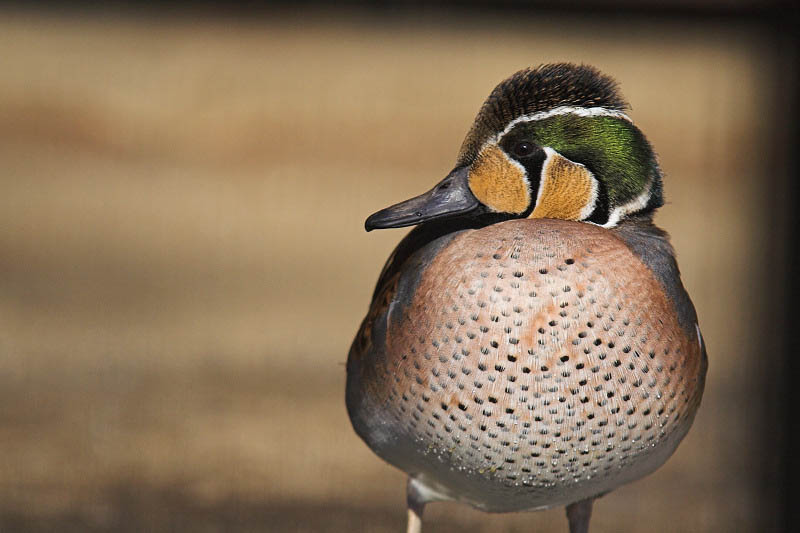
Source: Wikipedia
The Baikal teal is a species of dabbling duck, which is a type of duck that feeds by filtering food from the surface of the water. It is also known by two other names: the bimaculate duck and the squawk duck.
This species of duck is native to eastern Russia, where it breeds during the spring and summer months. During the winter, it migrates to East Asia to spend the colder months. It has brown and gray mottled plumage, a white chin, and a curved green beak.
The Baikal teal is considered to be a vulnerable species, as its population numbers have been steadily decreasing in recent years. Conservation efforts are being made to protect this species, such as habitat protection and the creation of protected areas.
| Kingdom | Animalia |
| Phylum | Chordata |
| Class | Aves |
| Order | Anseriformes |
| Family | Anatidae |
| Genus | Sibirionetta |
| Species | S. formosa |
10. Tufted Duck
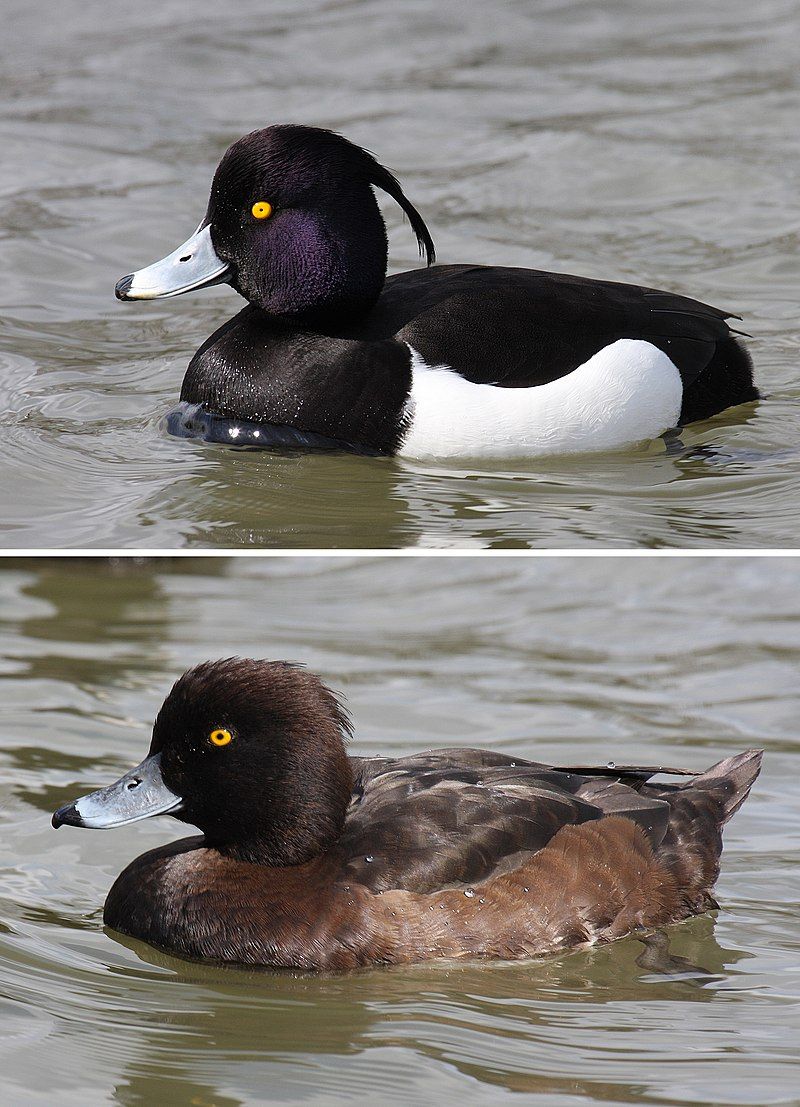
The tufted duck, also known as the tufted pochard, is a species of small diving duck that is native to northern Eurasia. It has a population of approximately one million birds, and is distinguished by its distinctive tuft of feathers on the head.
The scientific name for the species is derived from Ancient Greek, where the word aithuia referred to an unidentified seabird mentioned by various authors, including Hesychius and Aristotle.
The Latin words fuligo and gula, meaning “soot” and “throat” respectively, are also used in the scientific name to denote the species’ unique characteristics. The tufted duck is a small species of duck, with a body length of up to 50 cm and a wingspan of up to 75 cm.
The species has brown and white mottled plumage, with a black head and a white eye ring. It has a distinctive tuft of feathers on the head, which gives the species its name, and orange legs and feet.
The tufted duck is an aquatic species and prefers freshwater habitats, such as lakes, rivers, and marshes. It feeds on aquatic plants, insects, crustaceans, and mollusks. It is a migratory species, and in the winter can be found in parts of Europe, Asia, and North America.
| Kingdom | Animalia |
| Phylum | Chordata |
| Class | Aves |
| Order | Anseriformes |
| Family | Anatidae |
| Genus | Aythya |
| Species | A. fuligula |
11. Common Shelduck
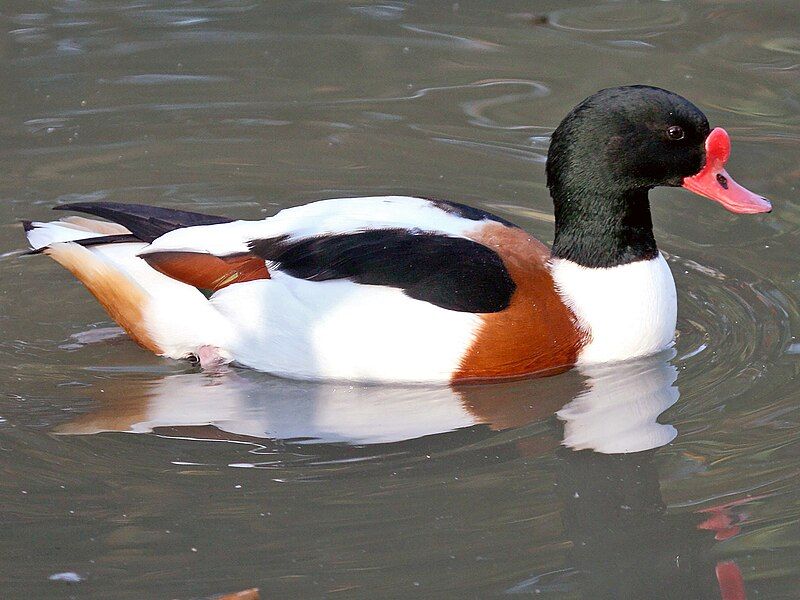
The common shelduck is a species of waterfowl in the shelduck genus, Tadorna. It is widely distributed and abundant in the Euro-Siberian region of the Palearctic, where its breeding season is mainly in temperate climates and its wintering season in subtropical regions.
During the winter months, some shelducks can also be found in the Maghreb, a region of North Africa. The common shelduck has a distinctive plumage, with a chestnut head and neck, a black tail and bill, and bright white wings bordered by black.
Its legs are orange, and its body is light grey. As far as its behavior, the common shelduck is a social species that usually lives in flocks. It feeds mainly on aquatic plants and mollusks, and it is a strong swimmer and a proficient diver.
It is also a good flyer, able to fly at high altitudes in order to migrate.
| Kingdom | Animalia |
| Phylum | Chordata |
| Class | Aves |
| Order | Anseriformes |
| Family | Anatidae |
| Genus | Tadorna |
| Species | T. tadorna |
12. Copper Pheasant
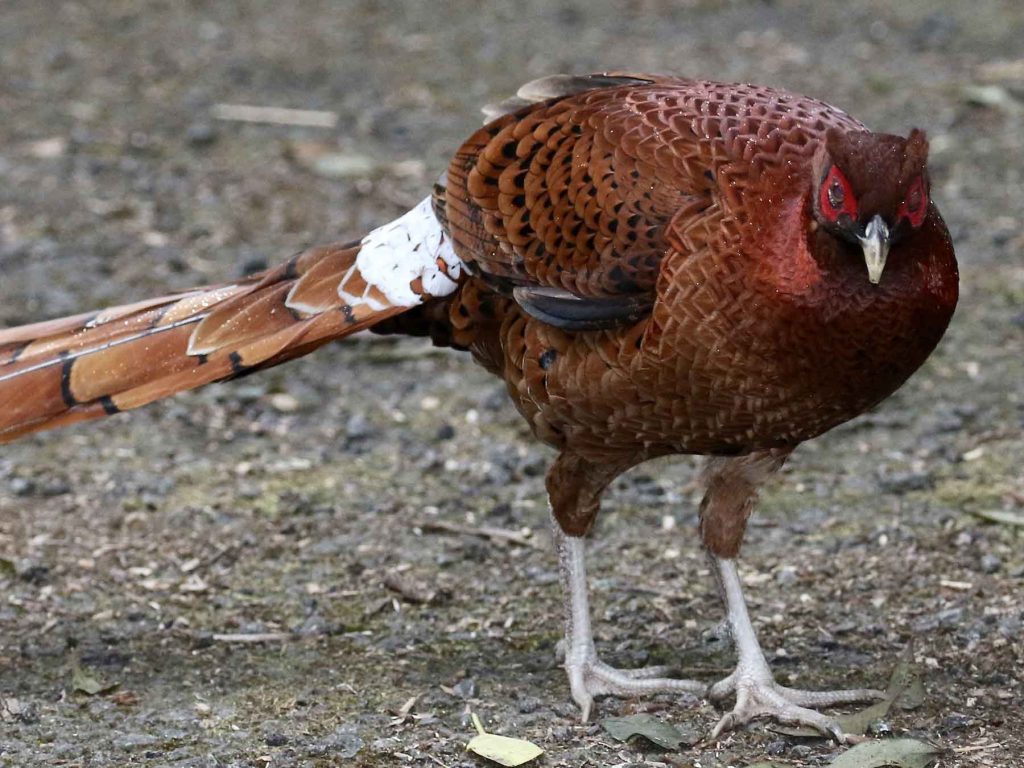
Source: ebird.org
The copper pheasant, also known as Soemmerring’s pheasant, is a species of bird that is native to Japan. It is named after the German scientist Samuel Thomas von Soemmerring, who studied the species in the 18th century.
The copper pheasant is a medium-sized bird with a brown body and a distinctive crest of feathers on its head. Its tail feathers are copper in color, giving the bird its name.
The copper pheasant is a solitary bird and usually found in dense forests, where it feeds on insects, seeds, and fruits.
It is also known to occasionally eat small frogs and lizards. The species is listed as “vulnerable” on the IUCN Red List of Threatened Species due to its limited range and possible habitat destruction.
It is estimated that there are fewer than 10,000 adult copper pheasants remaining in the wild. Conservation efforts have been made to protect the species, such as the establishment of protected areas and captive breeding programs.
As a result, the copper pheasant population is slowly increasing. The copper pheasant is a unique species that is an important part of Japan’s biodiversity. Its distinct coloring and behavior make it an interesting species to observe.
The species is also a reminder of the importance of conservation and the need to protect threatened species from extinction.
| Kingdom | Animalia |
| Phylum | Chordata |
| Class | Aves |
| Order | Galliformes |
| Family | Phasianidae |
| Genus | Syrmaticus |
| Species | S. soemmerringii |
13. Great-Crested Grebe
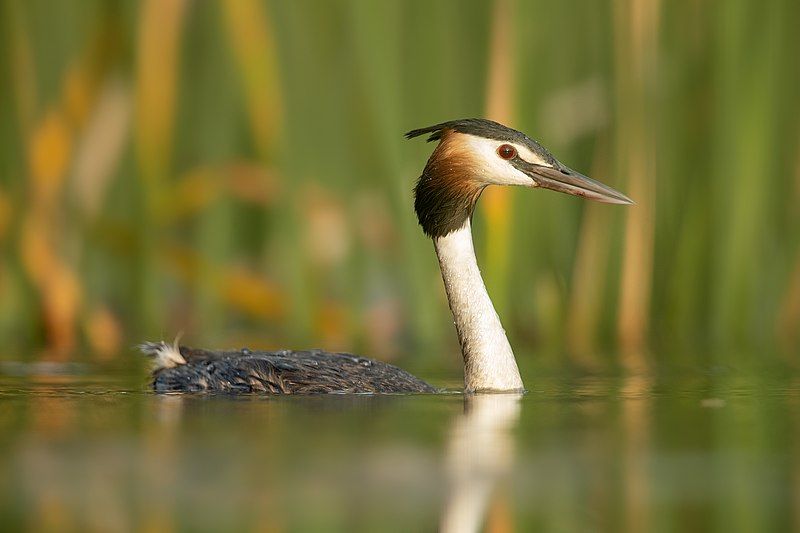
The great crested grebe is an aquatic bird native to Europe, Asia, and parts of Africa. It is a member of the Podicipedidae family of birds, which are commonly referred to as grebes.
These birds have a distinctively shaped body, with a long neck and a large head, and webbed feet. They are typically between 28 and 32 centimeters long and are brown or gray in color. The great crested grebe is noted for its elaborate mating display.
This is a courtship ritual which involves the male and female birds swimming together, with their chests raised high above the water. The male will then make a loud, trumpet-like noise, as the two birds swim in circles.
They will then move their necks and heads in a synchronised manner, while pointing their beaks skyward.
This display can last for several minutes and is a sure sign that the birds are in the process of mating. The great crested grebe is an important species to its environment, as it eats a range of aquatic creatures, such as small fish, aquatic insects, and crustaceans.
It also provides food for other species of birds, such as cormorants and kingfishers. Furthermore, the great crested grebe is a symbol of conservation, as it is a species which is considered to be of least concern by the International Union for Conservation of Nature (IUCN).
This means that it is not facing any major risk of extinction, though its population is declining in some areas due to habitat loss, pollution, and hunting.
| Kingdom | Animalia |
| Phylum | Chordata |
| Class | Aves |
| Order | Podicipediformes |
| Family | Podicipedidae |
| Genus | Podiceps |
| Species | P. cristatus |
14. Siberian Crane
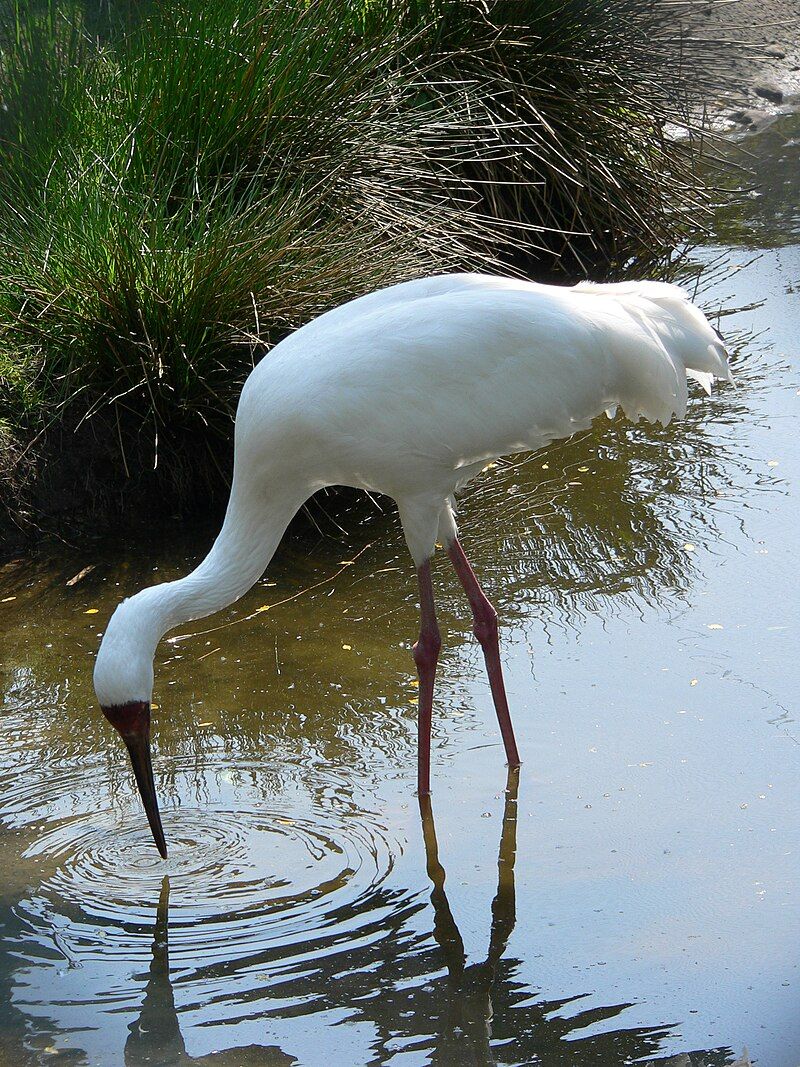
The Siberian crane is a majestic bird that is easily recognizable by its white feathers and elegant long neck.
It is found in the family Gruidae, which is a family of large wading birds that also includes other well-known species such as the whooping crane and the sandhill crane.
The Siberian crane is native to eastern Russia, and is migratory in nature, spending the summer in remote parts of Siberia before making its annual migration to India and Iran for the winter.
This species has been classified as endangered due to the destruction of its natural habitat and illegal hunting. Its population in the wild is estimated to be less than 4,000, and its future is uncertain.
Despite conservation efforts, it is likely that the population of Siberian cranes will continue to decline in the coming years.
| Kingdom | Animalia |
| Phylum | Chordata |
| Class | Aves |
| Order | Gruiformes |
| Family | Gruidae |
| Genus | Leucogeranus |
| Species | L. leucogeranus |
15. Demoiselle Crane
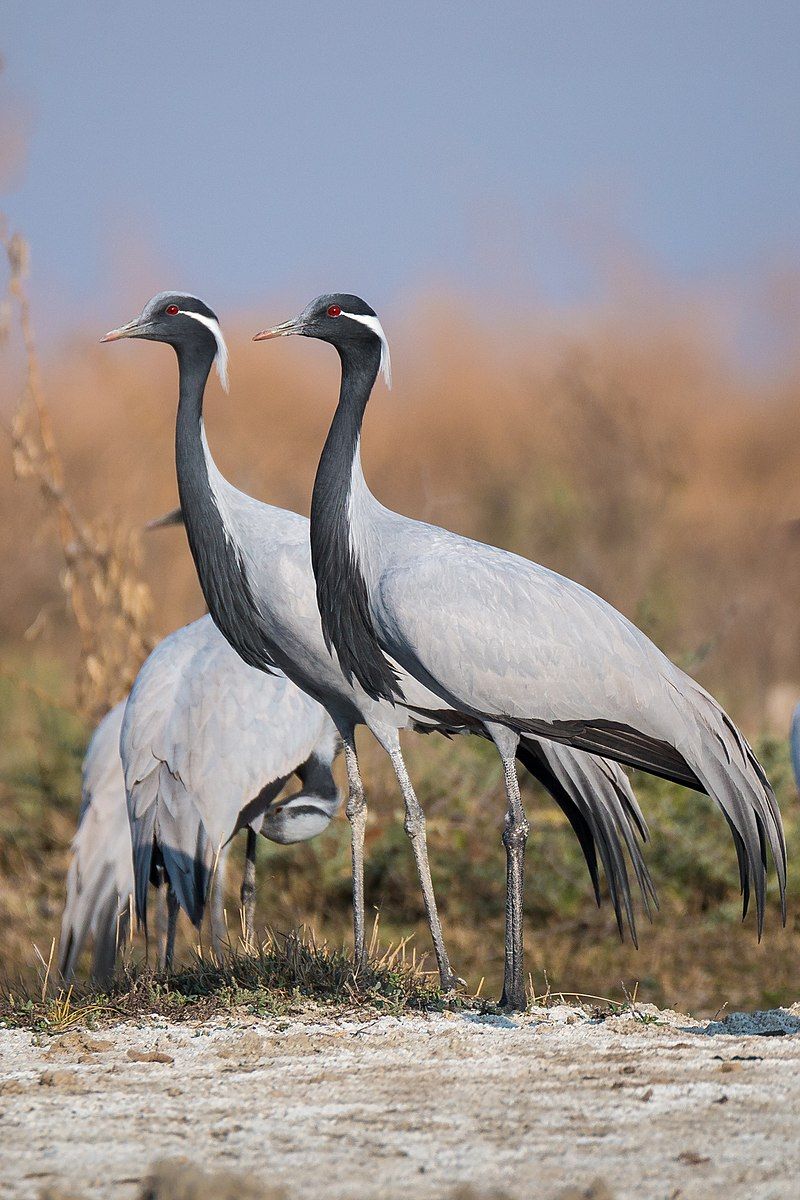
The demoiselle crane is a species of crane found in Central Eurosiberia, a region stretching from the Black Sea to Mongolia and Northeast China. This species of crane is migratory, meaning that it will fly long distances to reach its breeding ground.
Each year, they migrate from their wintering grounds to their breeding grounds in Central Eurosiberia. The breeding grounds for this species of crane are located in Turkey, where there is a small breeding population.
The demoiselle crane is a medium-sized bird that is white in color with black wingtips and a black tail. The wingspan of these cranes is approximately 2 meters and they can reach speeds of up to 100 kilometers per hour when they migrate.
These cranes mainly feed on plant matter, such as grains, insects, and small vertebrates. They also scavenge for food and have been known to steal food from other animals. The demoiselle crane is a threatened species due to loss of habitat, hunting, and illegal trade.
In order to protect this species, many countries have implemented protection measures such as establishing protected areas, creating awareness about the species, and passing laws that prohibit hunting and trapping of the crane.
Conservation efforts have been successful in increasing the breeding population of these cranes in Turkey. The demoiselle crane is an important species, not only to the environment but to humans as well.
These cranes serve as indicators of the health of wetlands and grasslands, and they also help to keep insect populations in check. They are also a source of inspiration for many, as their graceful flight and majestic beauty capture the hearts of many.
| Kingdom | Animalia |
| Phylum | Chordata |
| Class | Aves |
| Order | Gruiformes |
| Family | Gruidae |
| Genus | Grus |
| Species | G. virgo |
16. Red-Crowned Crane
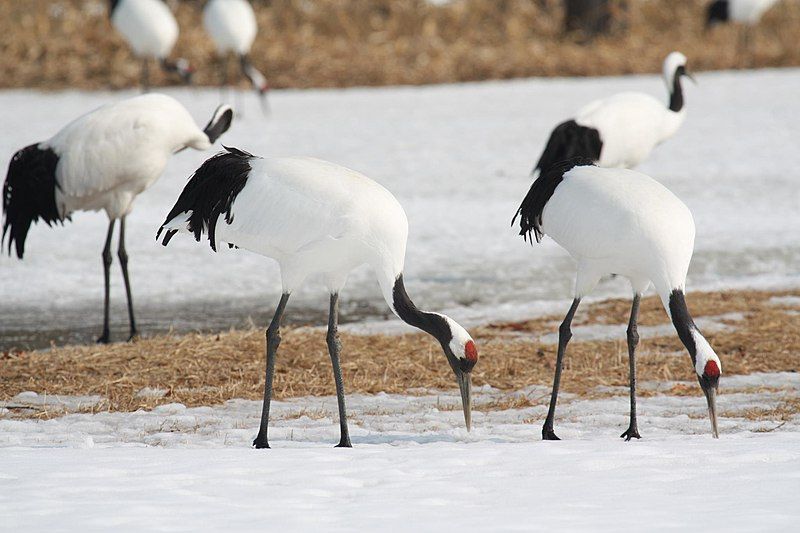
The red-crowned crane, also known as the Manchurian crane, is an iconic species found in East Asia. It is one of the rarest cranes in the world and is revered in some parts of its range as a symbol of luck, longevity, and fidelity.
The red-crowned crane is a large bird with a wingspan of up to 2.3 meters, and a body length of up to 1.5 meters. The head and neck are covered in bright red feathers, with a contrasting white belly and grey wings.
In addition to its striking plumage, the red-crowned crane is also known for its powerful and graceful courtship dance, which pairs perform together as part of their mating ritual.
This species is currently endangered due to habitat loss, hunting, and other human-induced threats. In some parts of its range, the red-crowned crane is held in high esteem, with its image appearing in artwork, dance, and literature.
It is seen as a symbol of luck, longevity, and fidelity, and is often associated with the spirits of ancestors. The red-crowned crane is a species that needs our protection, and efforts to conserve its habitat and protect it from harm are essential to its survival.
| Kingdom | Animalia |
| Phylum | Chordata |
| Class | Aves |
| Order | Gruiformes |
| Family | Gruidae |
| Genus | Grus |
| Species | G. japonensis |
17. Short-Tailed Albatross
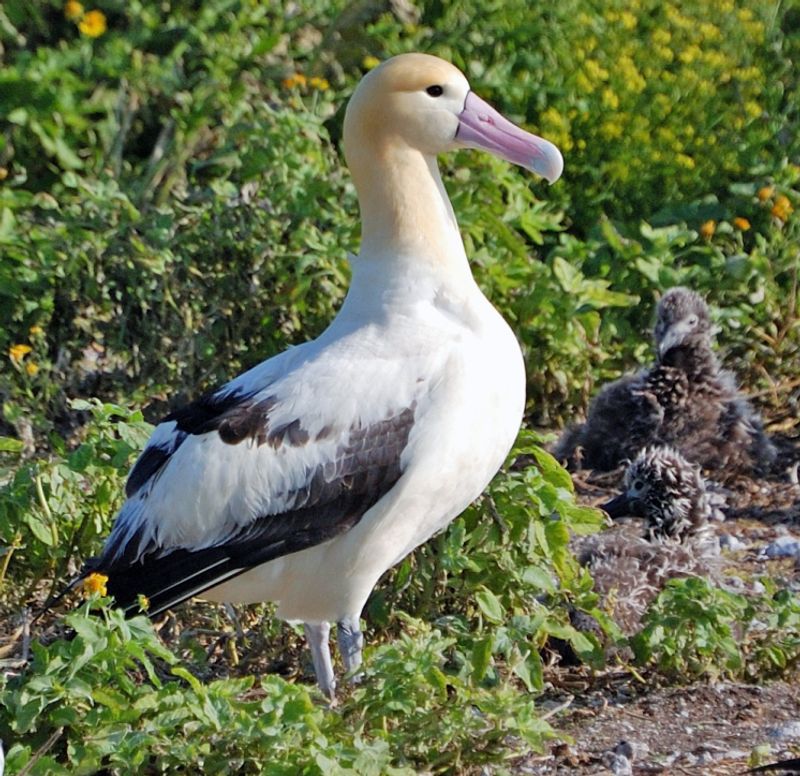
The short-tailed albatross, or Steller’s albatross, is a large, rare seabird that inhabits the North Pacific Ocean.
It is closely related to the other North Pacific albatross species, but there are some notable differences in its behavior and physical characteristics that link it to the albatrosses of the Southern Ocean.
These differences are likely a result of the many migratory patterns of this species, which see it travel between the Northern and Southern Hemispheres over the course of its lifetime.
Its wingspan is among the largest of any bird, and it is capable of flying long distances in search of food. The short-tailed albatross is usually found near the open ocean and can be observed hovering above the waves in search of small fish, squid, and crustaceans.
The species is listed as vulnerable, due to the threats posed by human activities such as overfishing and marine debris. Despite these threats, the albatross is a resilient species that has been able to adapt to its changing environment.
| Kingdom | Animalia |
| Phylum | Chordata |
| Class | Aves |
| Order | Procellariiformes |
| Family | Diomedeidae |
| Genus | Phoebastria |
| Species | P. albatrus |
18. Slaty-Legged Crake
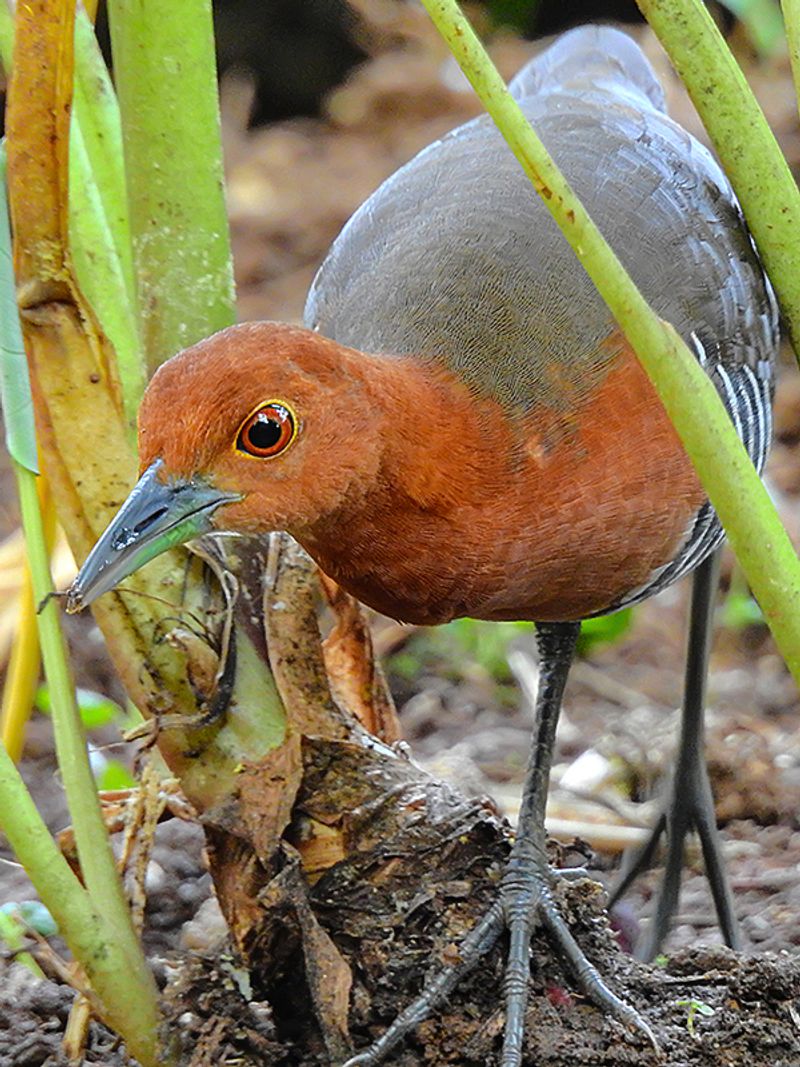
The slaty-legged crake, also known as the banded crake, is a unique waterbird that belongs to the Rallidae family. Rallidae is a family of birds that includes rails, crakes, and coots. This bird has a unique appearance with its slaty-colored legs and its rusty-brown body.
Its head is grayish-white with a black band encircling the crown and nape. Its wings are brownish-black and the tail is tipped with white. The slaty-legged crake can be found in a variety of wetland habitats, including wetlands, marshes, and rivers.
It feeds on small crustaceans, insects, and other small aquatic invertebrates. These birds breed in the tropics but can be found in other parts of the world during the winter months.
The slaty-legged crake is an important part of wetland ecosystems as it helps to control the populations of small aquatic invertebrates. It is also an important part of the food chain as it is a primary food source for many species of birds, mammals, and reptiles.
The slaty-legged crake is an interesting and important bird species that helps to maintain the balance of the wetland environment.
| Kingdom | Animalia |
| Phylum | Chordata |
| Class | Aves |
| Order | Gruiformes |
| Family | Rallidae |
| Genus | Rallina |
| Species | R. eurizonoides |
19. Grey Plover
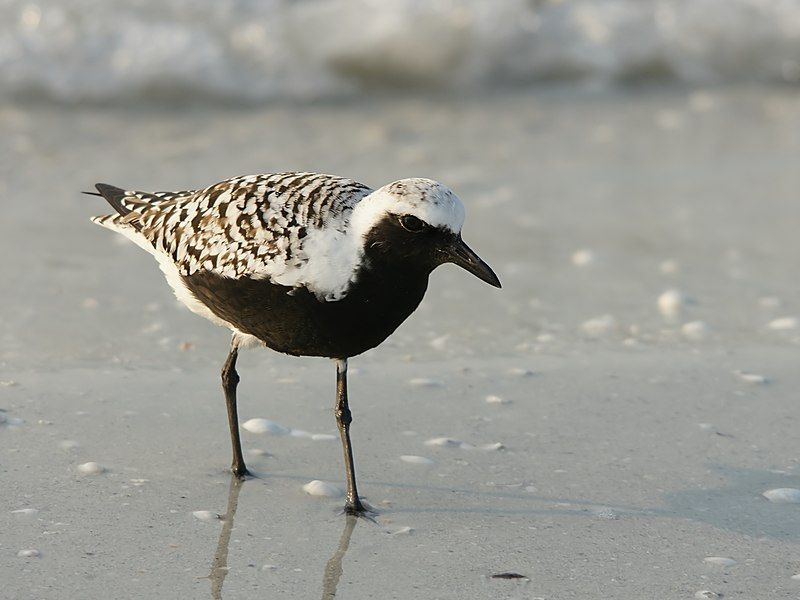
The grey plover, also known as the black-bellied plover in North America, is a species of plover that breeds in the Arctic regions. It is a large bird, and is capable of long-distance migration, allowing it to have a nearly worldwide coastal distribution when not breeding.
During the breeding season, the grey plover can be found in the Arctic regions, but when it is not breeding, it is found around the coasts of many countries. It is a migratory species, so it travels long distances to reach its breeding grounds.
The grey plover is a sociable bird, preferring to nest in colonies with other plovers, and it is also known to be a ground feeder, eating mainly insects, crustaceans, and other small invertebrates.
In the winter, the grey plover can be found in coastal areas, where it feeds on the plentiful supply of food that is available.
| Kingdom | Animalia |
| Phylum | Chordata |
| Class | Aves |
| Order | Charadriiformes |
| Family | Charadriidae |
| Genus | Pluvialis |
| Species | P. squatarola |
Conclusion
Kagoshima is a great place to watch birds. The unique combination of the warm climate, diverse habitats, and abundant food sources make Kagoshima ideal for birdwatching.
With over 300 species of birds in the area, there is plenty of opportunity to observe and enjoy the beauty of these creatures. With the proper knowledge and respect for their environment, birders can experience a truly unique experience in Kagoshima.